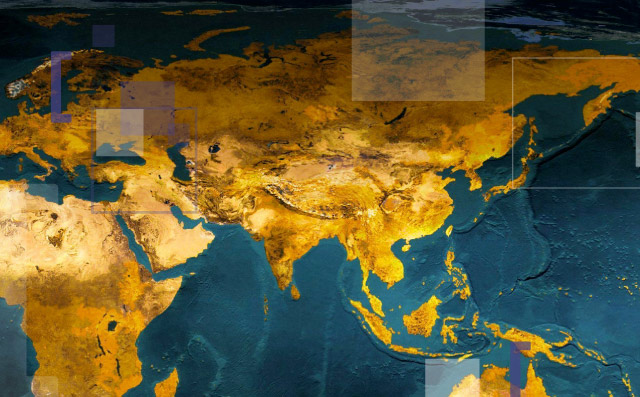
Written by Doug Austin, Editor of eDiscovery Today
When it comes to a discussion of eDiscovery practices on this blog (and others, including my blog eDiscovery Today), the focus tends to be mostly on US practices and laws. Not only US laws, but our discussions tend to revolve around US eDiscovery requirements including the Federal Rules of Civil Procedure (FRCP) and the Federal Rules of Evidence (FRE).
Many of us in eDiscovery know the “ins and outs” of rules like FRCP Rule 26(b)(1) (which covers the six parameters for proportionality), FRCP Rule 37(e) (which addresses sanctions for failing to preserve ESI) and FRE 502 (which addresses waiver of privilege). We rarely discuss eDiscovery as it relates to the Federal Rules of Criminal Procedure (FRCMP), nor do we often discuss eDiscovery rules within each of the states.
But there’s a whole, big, wide world out there and they have litigation and discovery (including eDiscovery) as well. The discovery practices and laws differ in each country – often widely – from the laws we’re used to in the US.
eDiscovery in the Asia Pacific (APAC) Region
One of the areas of the world for which we now have a terrific resource to help us understand how eDiscovery is conducted is the Asia Pacific (APAC). EDRM recently published an APAC Primer for eDiscovery (available for download here) that goes into depth for the region, discussing each of nine countries/jurisdictions in depth in terms of its judicial system, its discovery requirements and guiding principles, and its handling of eDiscovery (among other things).
While some countries/jurisdictions (Australia, New Zealand, Hong Kong and Singapore) have common law systems and well-established eDiscovery practices and procedures in their respective court rules, other countries have different legal systems and less established eDiscovery practices. Here’s a brief look at each country/jurisdiction and what they have in place from a rules and discovery standpoint:
- Australia (Common Law): Court Rules, Practice Notes including Document Exchange Protocols for Discovery in Federal Courts and State Courts. Australia has established discovery practices and courts closely monitor discovery in litigation.
- Mainland China (Similar to Civil Law): Civil procedural rules provide for very limited scope for evidence collection and preservation and production procedures when compared with common law discovery regimes. Judges primarily direct these processes.
- Hong Kong (Common Law): Hong Kong has established discovery practices and protects legal professional privilege following the English legal tradition. Its courts provide for civil procedural rules and practice directions, including document exchange and eDiscovery protocols.
- India (Combination of Common Law, Civil Law and Religious Law): The IT Act defines rules to carry out electronic evidence collection or proceedings.
- Japan (Civil Law): Japanese civil procedural rules provide for very limited scope for evidence collection and preservation and production procedures when compared with common law discovery regimes. Judges primarily direct these processes.
- Korea (Civil Law): No common law discovery rule exists. Civil proceedings in Korea are governed by the Korean Civil Procedure Act (KCPA). Courts and judges are the primary fact finders in the evidentiary process.
- Malaysia (Common Law): There are no specific provisions for eDiscovery. The Rules of Court (ROC) are based on the English civil procedure rules, which provide for discovery, document exchange, and interrogatories. These can be applied to eDiscovery.
- New Zealand (Common Law): Court Rules include Document Exchange Protocols for discovery. New Zealand has established discovery practices and courts monitor closely discovery in litigation.
- Singapore (Common Law): The Rules of Court which are based on the English civil procedure rules, provide for discovery, document exchange, and interrogatories. In addition, Practice Directions (PD3, Part IV(A)), provide guidance specifically for eDiscovery.
This brief look illustrates just how different each country/jurisdiction is regarding their laws, rules and discovery practices. EDRM’s APAC Primer goes into considerable depth for each of them – much more depth than I can cover here in a single blog post. That’s why it’s 84 pages – it provides a deep dive into each jurisdiction!
Conclusion
These days, eDiscovery isn’t isolated to one set of rules or even one country. There are legal disputes all over the world and discoverable ESI all over the world as well – in many different languages. So many organizations are multi-national today that it’s imperative to understand the considerations of discovering ESI in various countries around the world, including the APAC.
The rules in these countries dictate how various phases of the EDRM life cycle are conducted – from Information Governance through Presentation. If your organization is multi-national (or has the potential for multi-national matters), it’s important to work with providers that not only support all of the EDRM phases, but understand how to apply them in different jurisdictions globally. The world is watching!
And for more educational topics from me related to eDiscovery, information governance, cybersecurity and data privacy, feel free to follow my blog, eDiscovery Today!
With offices across the globe, IPRO offers eDiscovery, Legal Hold, and Information Governance solutions for law firms, legal departments, and government agencies that are designed to handle the nuances of eDiscovery practices in any region. Learn more.



